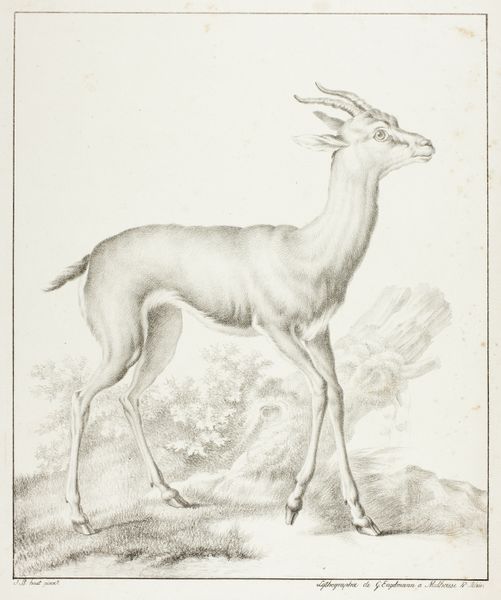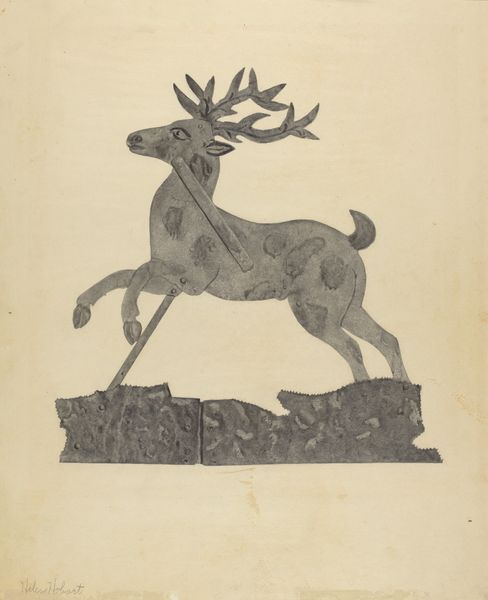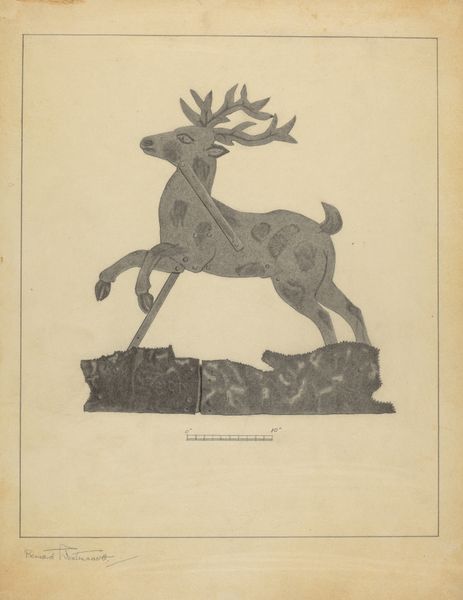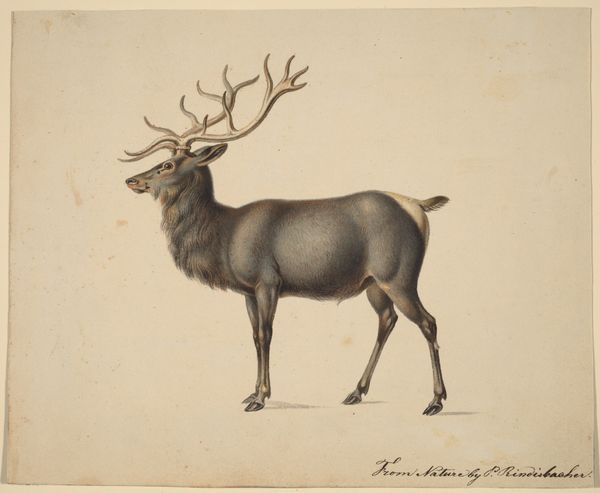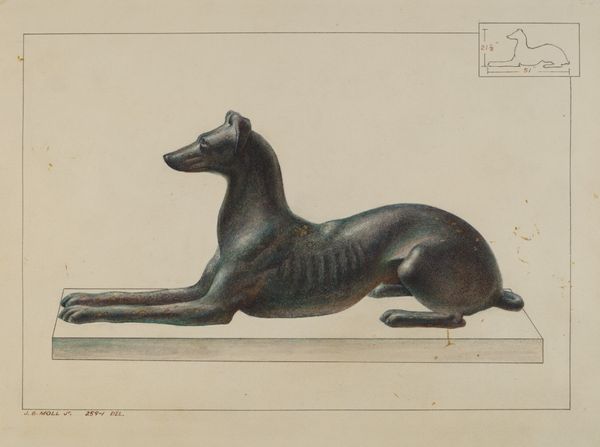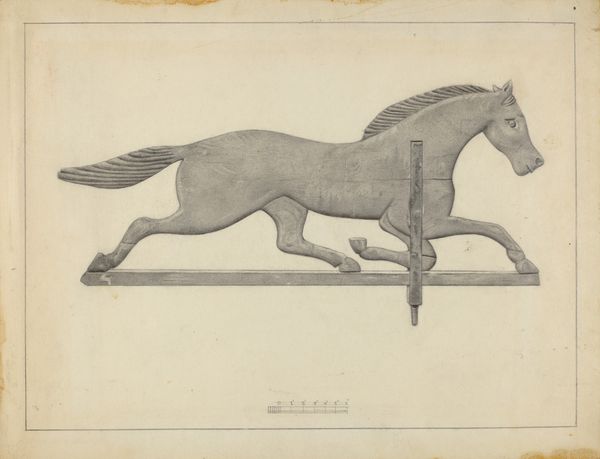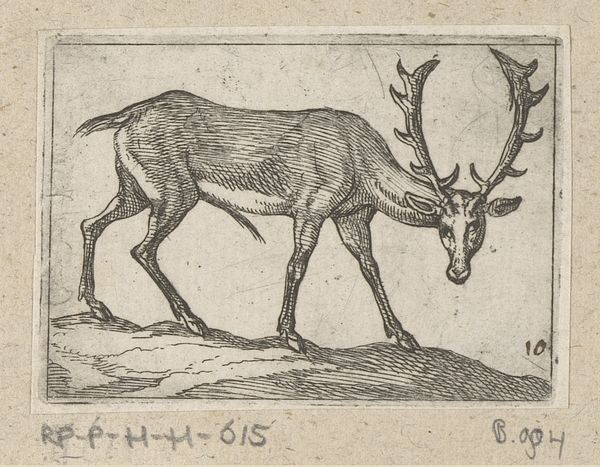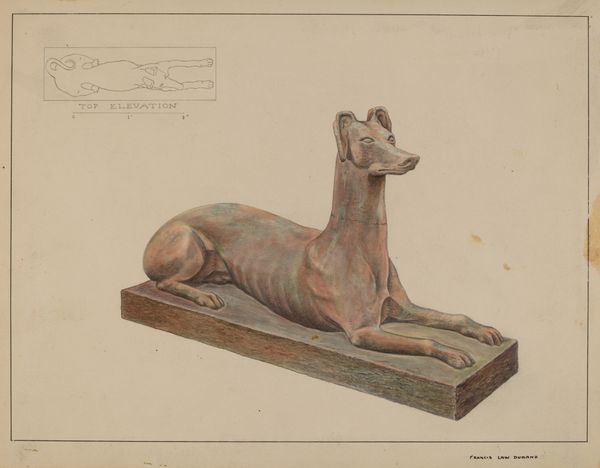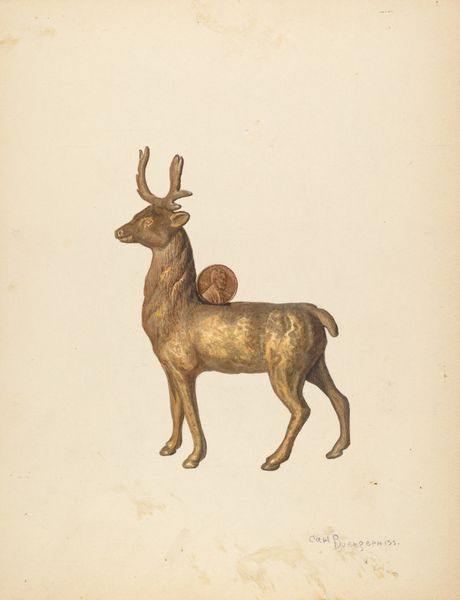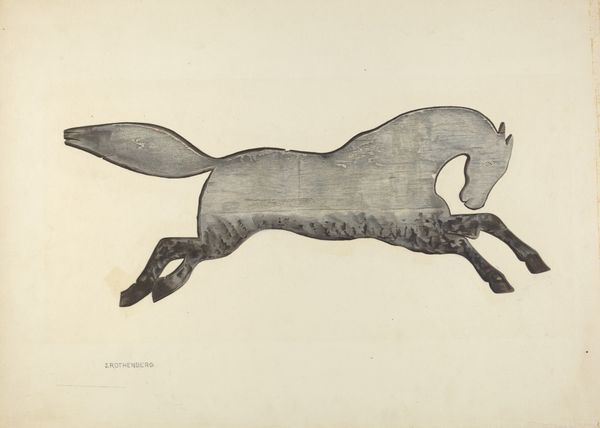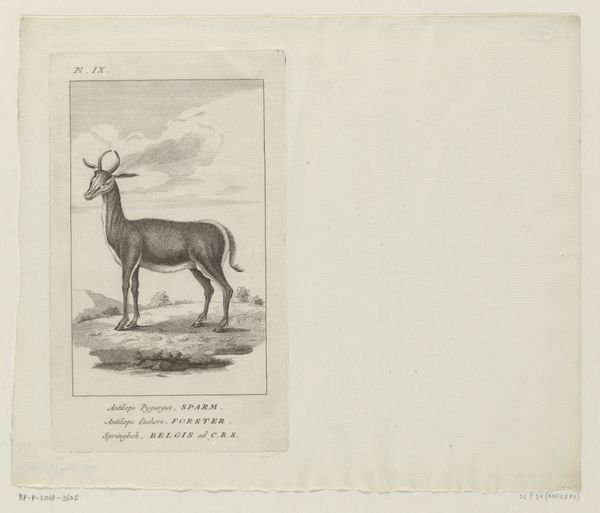
drawing, pencil
#
drawing
#
landscape
#
figuration
#
pencil drawing
#
pencil
#
realism
Dimensions: overall: 22.3 x 28.9 cm (8 3/4 x 11 3/8 in.) Original IAD Object: 19 1/2" long
Copyright: National Gallery of Art: CC0 1.0
Curator: Here we have a pencil drawing entitled "Deer Weather Vane," estimated to be from around 1938. The artist is listed as Salvatore Borrazzo. What's your initial impression? Editor: It looks functional, like a technical drawing, but also rather elegant in its simplicity. The texture implied in the metal is what stands out to me, considering its just a drawing. You can imagine the copper oxidizing over time, changing color with the elements. Curator: It's interesting you focus on the patina. Think about where weathervanes are usually found – atop barns, churches, civic buildings. They signal a connection to the landscape, and Borrazzo's drawing reminds us of how art is commissioned and consumed in that broader social space. It has an architectural intention. Editor: Definitely. But also a practical one. The precision needed to draft this means it would be ready to fabricate as a functional object. Think of the artisans involved—the draftsmen, metalworkers, and so on. How many hands would have realized this idea from sketch to sculptural form? Curator: That touches on the intersection of art, labor, and value. Weather vanes were, and sometimes still are, status symbols indicating the success of the owner and a knowledge of farming cycles and land dependence. There's a relationship here between material worth and cultural significance. Editor: Exactly. You've got this very humble drawing mediating the whole thing! Made with just paper and graphite but showing something expensive and showy that signals prestige, social position. There is even a simple set of measurements added to the image. Curator: A crucial point. And it makes you wonder: was Borrazzo the artisan, or merely the artist recording the artisan’s vision? Or both? That's the ambiguity of the document, and maybe that's what draws us to it as something beyond its functional intent. It makes the idea of it more accessible. Editor: It does that very well. Makes me think differently about the history of everyday objects. And to think, this lovely image captures the essence of material production. Curator: For me, it reminds us that art always operates within social and historical contexts, shaping our perceptions of value and status.
Comments
No comments
Be the first to comment and join the conversation on the ultimate creative platform.



